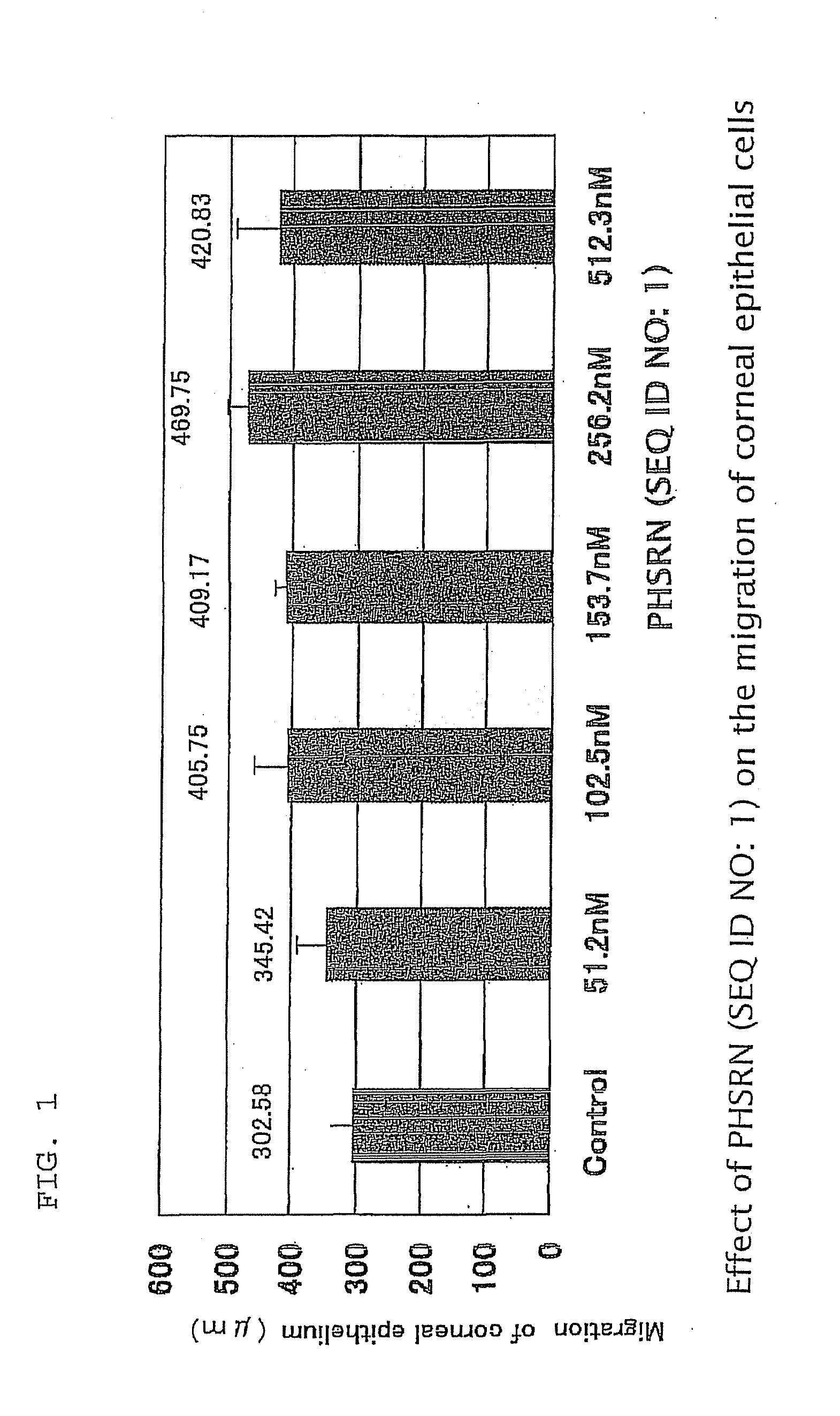Ophthalmological composition
a technology of ophthalmological composition and composition, applied in the field of opthalmological composition, can solve the problems of delayed repair process, adverse effects on normal epithelium structure, and persisting epithelial defects without being repaired, and achieve the effect of promoting the healing of corneal epithelial wounds
- Summary
- Abstract
- Description
- Claims
- Application Information
AI Technical Summary
Benefits of technology
Problems solved by technology
Method used
Image
Examples
preparation examples
1. Preparation Examples
[0039]1) Eye Drops
[0040]As Formulation 1, an eye drop, containing 0.01 g of Ac-Pro-His-Ser-Arg-Asn-NH2, 0.9 g of sodium chloride, and a suitable amount of sterilized purified water in a total amount of 100 ml, was prepared. In the same manner as Formulation 1, eye drops, respectively containing 0.00001 g, 0.00003 g, 0.0001 g, 0.0005 g, 0.001 g, 0.005 g, 0.05 g, and 0.1 g of Ac-Pro-His-Ser-Arg-Asn-NH2 in a total amount of 100 ml, were prepared.
[0041]As Formulation 2, an eye drop, containing 0.1 g of Ac-Pro-His-Ser-Arg-Asn-NH2, 0.8 g of sodium chloride, 0.1 g of sodium hydrogen phosphate, a suitable amount of sodium dihydrogen phosphate, and a suitable amount of sterilized purified water in a total amount of 100 ml, was prepared. In the same manner as Formulation 2, eye drops, respectively containing 0.00001 g, 0.00003 g, 0.0001 g, 0.0005 g, 0.001 g, 0.005 g, 0.05 g, and 0.1 g of Ac-Pro-His-Ser-Arg-Asn-NH2 in a total amount of 100 ml, were prepared.
[0042]2) Eye ...
PUM
| Property | Measurement | Unit |
|---|---|---|
| diameter | aaaaa | aaaaa |
| diameter | aaaaa | aaaaa |
| opthalmological composition | aaaaa | aaaaa |
Abstract
Description
Claims
Application Information
 Login to View More
Login to View More - R&D
- Intellectual Property
- Life Sciences
- Materials
- Tech Scout
- Unparalleled Data Quality
- Higher Quality Content
- 60% Fewer Hallucinations
Browse by: Latest US Patents, China's latest patents, Technical Efficacy Thesaurus, Application Domain, Technology Topic, Popular Technical Reports.
© 2025 PatSnap. All rights reserved.Legal|Privacy policy|Modern Slavery Act Transparency Statement|Sitemap|About US| Contact US: help@patsnap.com

